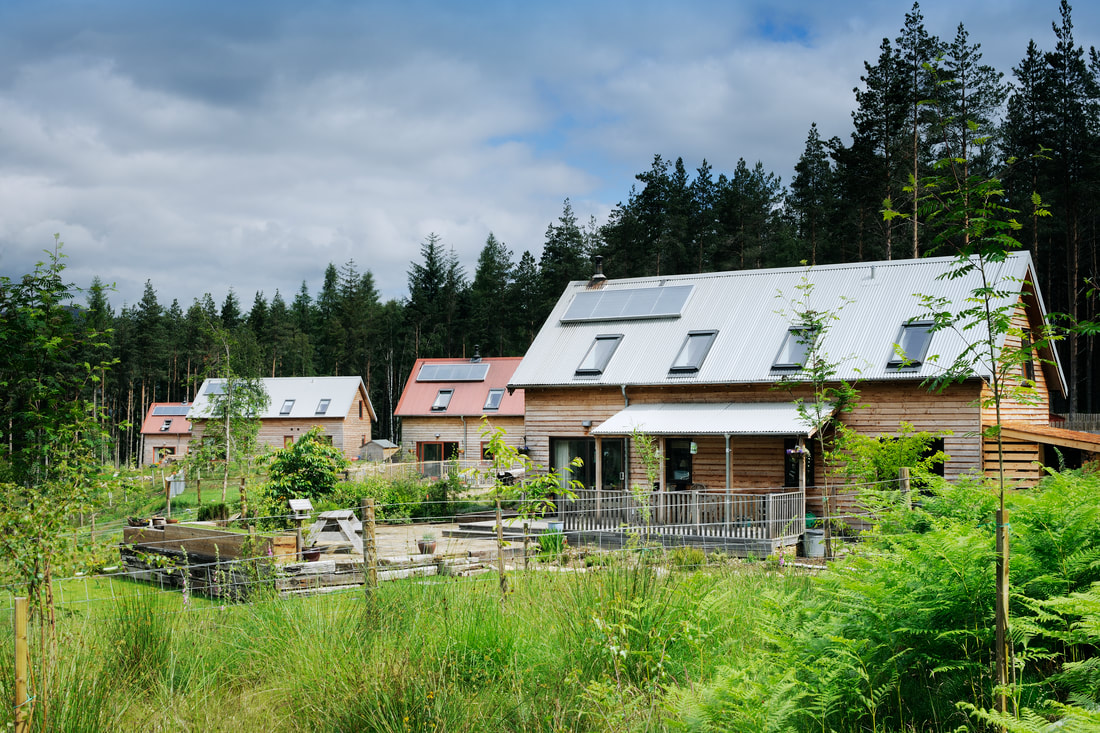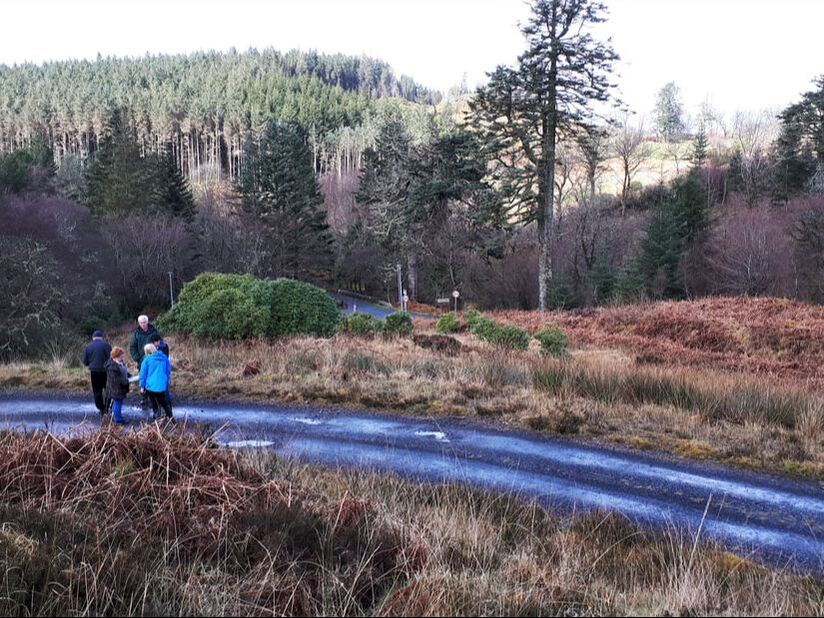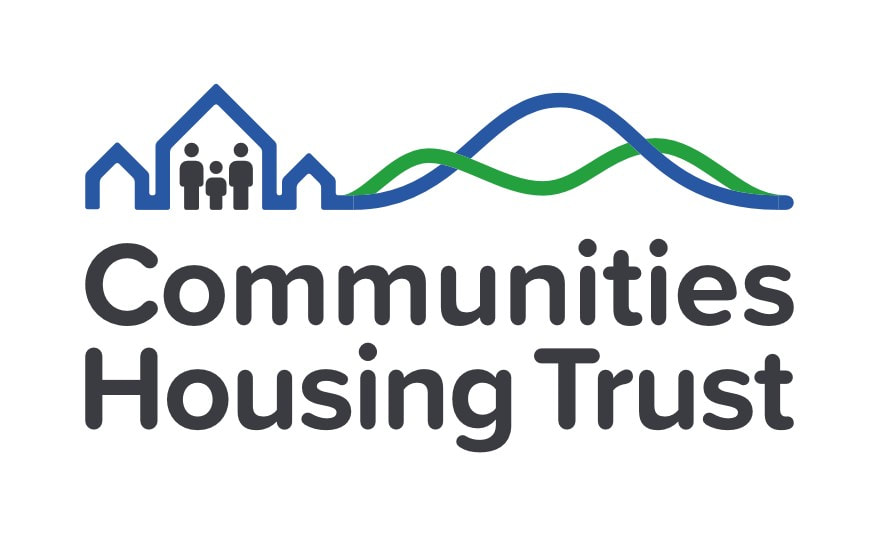|
This is the first in a series of monthly blogs about community-led housing in Scotland, jointly written by Mike Staples, Chief Executive at South of Scotland Community Housing (SOSCH), and Ronnie MacRae, Chief Executive at Communities Housing Trust (CHT). Between us we’ve worked with hundreds of communities across Scotland, providing well over 1,000 affordable homes. Amid all the noise about Glasgow’s COP26 and the world’s net zero targets, progressive and creative climate action has been quietly taking place in communities across Scotland. Scotland has ambitious climate goals. We’ve committed to becoming carbon neutral by 2045 and having 1 million zero-emission homes by 2030. The built environment has widely been acknowledged as a key area for opportunity in meeting these goals, and communities are making great progress through community-led housing. This isn’t new. Community Land Scotland’s recently commissioned research, Community Landowners and the Climate Emergency, finds that communities are good at climate-friendly regeneration and that environmental sustainability is a key tenet within their activities. The report finds that communities have “an over-riding concern to care for the community and the local environment,” (p.7). A second report by the Community Land Trust Network of England and Wales finds that community-led housing organisations in the UK routinely meet and exceed local and national carbon reduction requirements. Why? Because communities focus on their experiences, their needs, and their aspirations for the future. They look long-term. They want to thrive. They prioritise wellbeing. And this all translates into genuine, grassroots commitment to sustainability and environmental protections that we find in so much of their activities. Both SOSCH and CHT know this to be true. We frequently work with communities who are generating their own power through, for example, hydro schemes, rather than relying on fossil fuels. We work with communities retrofitting abandoned buildings and bringing them back into productive use as low-energy homes. We work with communities using vacant and derelict land to develop diverse and creative combinations of housing, services, and social and green spaces. Providing homes and services within easy reach contributes to the national aim of 20-minute neighbourhoods and reduces travel. These are just a few aspects of a wide picture of how we’re supporting communities in working towards net zero, and indeed carbon negative. Green design and energy efficiency
A mix of facilities supporting a local circular economyThe GALE Centre, part of CHT’s regeneration of Achtercairn in the centre of Gairloch on the west coast, is run by the Gairloch & Loch Ewe Action Forum (GALE). It embodies GALE’s ambitions to provide services and lead sustainable, community-led development in the region.
Retrofitting disused buildings
Supporting rural trades and ‘green’ construction
So, the good news is that community-led housing is regenerating places and making important contributions to tackling our climate crisis.
Community-led housing enables a just and inclusive transition to net-zero. It is an empowering, democratic way to involve everyone in reducing climate change without jeopardising the human right to a warm, affordable home. Let’s widen the national conversation about net zero and the ways to achieve it. Community-led development, based on the everyday experiences of local people and their wishes for the future, is a fair and responsible way to deliver sustainable development that Scotland urgently demands. Support for community ownership and development means both people and planet thrive long-term. We’re calling on the Scottish and UK governments to recognise the leadership of communities and increase support for community-led housing. It’ll allow more communities to deliver on climate targets as well as building the homes we so desperately need. The community-led development of five homes and five self-build plots was granted full planning permission in January. Raasay Development Trust (RDT) is leading the project in the main village of Inverarish with support from the Communities Housing Trust (CHT). The development will include two homes for social rent with Lochalsh & Skye Housing Association, and three community-owned homes for affordable rent with RDT. There will also be five affordable self-build plots, two with RDT and three with CHT. All the plots will be discounted through the Rural Housing Burden, which assures affordability in perpetuity for the local community. Raasay has seen an increase of demand for affordable housing. A recent review of the Highland Housing Registers demand and supply tool indicated that at least 32 people are on the waiting list with Raasay as a preferred choice. These new and much-needed homes will prioritise people with a link or need to live on the island. The land was purchased by RDT from North Raasay Sheep Stock Club, with funding from the Scottish Land Fund, and with CHT’s support. Further key funding has been obtained from the Scottish Government’s Rural & Islands Housing Fund, and the Ecology Building Society. Skye-based James MacQueen Building Contractors have been appointed, and it is hoped the work will start on site in spring.
Chair of Raasay Development Trust, Iain Hector Ross said: "Raasay has a clear and present need for new affordable housing stock to meet the growing demand from young islanders choosing to stay and others wanting to move to the island for increasing work opportunities. We are fortunate that the island is enjoying an era of growing economic confidence and opportunity, where young people now see a long-term future for themselves here. Quality housing is vital to support that future and we hope that the delivery of these new homes is just the first step towards providing every young islander with an affordable option." Ronnie MacRae, CEO of CHT, said: “Congratulations to the Raasay community for reaching the next milestone in this project. This development will provide homes for 10 families and help stop outward migration from the island, as well as helping the school and wider community to thrive. We’d like to thank the Scottish Government for their funding support through which local businesses and the economy can also benefit and is therefore creating more resilient island communities.” Dr Audrey Sinclair, Chair of Lochalsh and Skye Housing Association said: “I am delighted that this project will start in Spring this year. The joint working amongst RDT, CHT and Lochalsh and Skye Housing Association has to be applauded in reaching this stage. It is so important for our communities to achieve their visions and affordable housing has a fundamental part to play in making a positive impact on community sustainment.” To express interest in the homes or self-build plots, please register your details at: www.chtrust.co.uk/future-opportunities.html The Mount Blair Community Development Trust (MBCDT) is launching a survey in partnership with the Communities Housing Trust (CHT) to inform what housing is needed now and into the future. The survey results will help shape what housing is provided, led by the needs and aspirations of the community, and will help ensure future sustainability.
Colin Reed, Development Officer at MBCDT said: “The Trust are delighted to be working in partnership with CHT and we look forward to sharing the results of this consultation. Access to affordable housing has long been an issue locally and it has been noted once again with responses to our recent Community Action Plan survey.”
Ronnie MacRae, CEO of Communities Housing Trust, said: “We are very pleased to be working with the Mount Blair community to understand their specific needs, as part of a wider project across Perthshire. We know demand for quality, affordable housing will be high here, and we now have increased opportunities to address this, with Scottish government policies on land reform, supporting rural housing and community empowerment. “Community-led housing is often the best option in small, rural communities, as it can be tailored, providing a mix of tenures as well as a mix of house sizes, to give the greatest possible flexibility to residents.” The surveys can be completed online before Friday 11 March at: https://www.chtrust.co.uk/surveys. The disused school and schoolhouse in Glendale, Skye has received a grant of over £47,000 from the Scottish Government’s Rural Communities in Action Fund to undertake further feasibility, design and development work.
The community-led project to renovate the school and schoolhouse into 5-6 affordable homes is being led by the Glendale Trust, in partnership with the Communities Housing Trust. This project is supported by the Rural Communities Ideas into Action fund, supported by the Scottish Government and delivered by Inspiring Scotland to encourage and support innovative approaches to community-led local development in rural communities across Scotland. The Glendale Trust purchased the school in 2014 with funding support from the Scottish Land Fund. £10,000 has also been provided by the Architectural Heritage Fund towards early-stage costs. A standard renovation for the Borrodale buildings was found to be unviable, so new and innovative approaches are being looked at, particularly in terms of retrofitting for the climate crisis and to maximise benefits and opportunities for the local community. There are 39,000 long-term empty homes across Scotland, and an urgent need for affordable housing. The renovation will focus on transforming an eyesore into an asset, providing housing for the local community and supporting economic growth of the region. It is expected that the development will provide a mix of affordable tenures based on demand, such as social rent equivalent, mid-market rent, low-cost home ownership, or housing for keyworkers. This mix allows more flexibility for a small community, allowing for differing financial capabilities and changing circumstances. Clare Gray, Chair of The Glendale Trust, said: “Borrodale School and Schoolhouse are embedded in the landscape and in the collective memory of generations of people from Glendale. We are delighted that the Communities Housing Trust, the Scottish Government’s Rural Communities in Action Fund and the AHF also recognise the value of the buildings and together we can now work to create affordable housing within their walls.” Ronnie MacRae, CEO of Communities Housing Trust, said: “We are delighted to be supporting the Glendale Trust in renovating the old school, as it’ll provide much needed housing for the community. It will also be an example of community-led, climate-friendly restoration which communities across the country can replicate and use to boost local skills and economy. The homes will help ensure the community thrives into the future, and the support of Scottish Government and others are key here so we’d like to thank them for that.” Jo Robertson, Scotland Support Officer, Architectural Heritage Fund, said: “Thanks to funding from the William Grant Foundation, the Architectural Heritage Fund is pleased to provide grant towards the re-purposing of Borrodale Schoolhouse. This project will use both traditional and new technologies to improve environmental performance and will find design solutions that can be replicated to similar buildings across the Highlands.” |
CHT BlogThis blog features a variety of CHT’s developments and projects located throughout the central and northern Scotland. It also includes the latest news and updates regarding the Trust. Archives
September 2023
Archives
September 2023
Categories
All
|














 RSS Feed
RSS Feed
